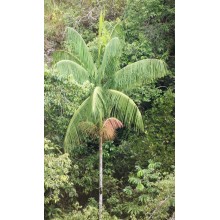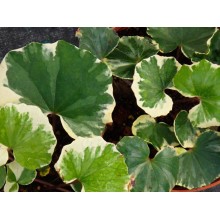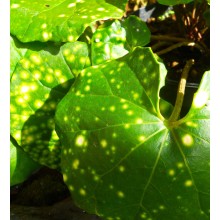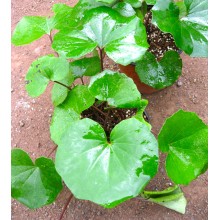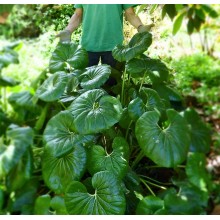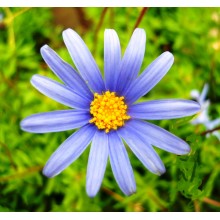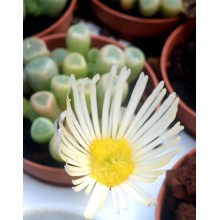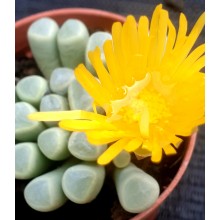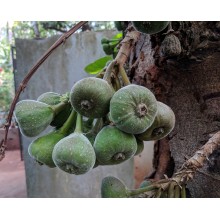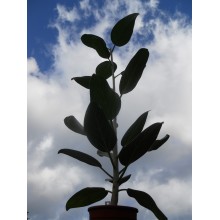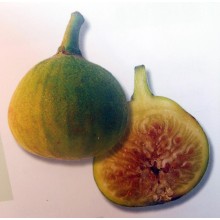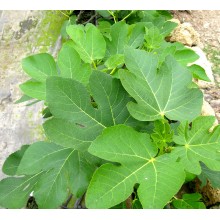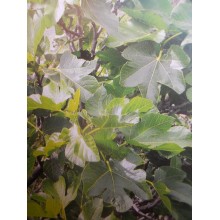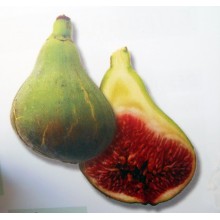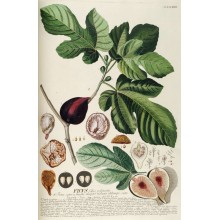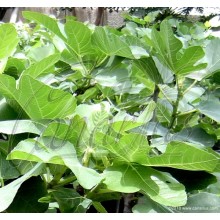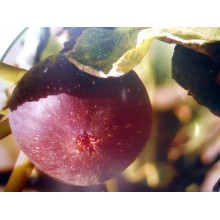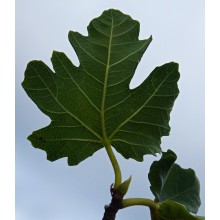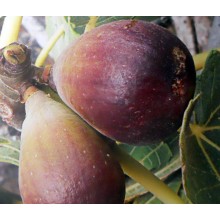Tutte le piante Ci sono 1884 prodotti.

Se vi piacciono le piante esotiche, allora sei nel posto giusto. Canarius offre le piante esotiche difficile da trovare che sono raramente disponibili in centri di giardinaggio. Il nostro negozio ha specie naturali e rari ibridi. Offriamo piante esotiche provenienti dalle Isole Canarie.
Gli ordini sono inviati a ovunque in Europa e anche in tutto il mondo. I pacchi raggiungeranno la vostra casa in pochi giorni dopo la spedizione (ma abbiamo bisogno anche alcuni giorni per l'elaborazione). Non esitate a contattarci se avete domande.
Sotto-categorie
-
Succulente
I deserti del mondo e le zone secche ospitano le piante più interessanti. Canarius offre una selezione crescente di piante succulente di massima qualità, perché sono coltivate all'aperto, in pieno sole delle Isole Canarie.
I succulente o "piante grasse" sono specie di ritenzione di acqua, adattate alle condizioni di asciutto. Loro accumulano succum (succo, acqua) nelle loro foglie, steli o radici, e spesso mostrano un aspetto robusto e carnoso.
-
Esotiche
Le piante esotiche sono specie provenienti da altre parti del mondo, e di solito hanno le qualità ornamentali: una vegetazione lussureggiante, fiori colorati, forme insolite... Qui è possibile trovare una grande varietà di piante esotiche: da bromeliacee e Heliconias, fino a palme e piante d'appartamento.
Le piante esotiche non hanno un uso particolare. I collettori acquistano questo tipo di piante per la loro rarità, per la decorazione interna o esterna, a seconda delle loro caratteristiche.
-
Da frutto & Per la salute
Le piante da frutto, erbe e piante medicinale sono concentrati su come ottenere una salute migliore. In questo contenuto della sezione, ogni tipo di pianta produce effetti salutari, entrambi alberi da frutto (Feijoa, Ananas, Fina Jete...) e piante per la salute, come Graviola, Aloe vera, Callisia fragrans... Nel normale metabolismo di tutti gli esseri viventi, l'organismo produce delle sostanze nutritive da latenti per l'ambiente; alcune di queste sostanze chimiche sono parte del processo in tutte le specie. Normalmente, i composti utili sono concentrati in alcune dei sue parti: foglie, semi, fiori...
-
Speciale
Su canarius.com cerchiamo di rimuovere i limiti nel campo della botanica. Sul nostro negozio online cerchiamo di facilitare l'acquisto / vendita di piante di tutto il mondo. Per questo motivo, coltiviamo piante di tutto il mondo, specie più comuni ed anche piante più particolari, come si può vedere in questa sezione.
-
Farfugium japonicum 'Argenteum'
Farfugium japonicum 'Argenteum'
This classic clone of Farfugium is still unsurpassed in beauty. Leaves show many different hues of white. This variegated 'Argenteum' adds light to a shady spot in the garden. It has been around for more than a century but it is still only grown by specialized nurseries because it is slower than other cultivars.
24,50 € -
Farfugium japonicum 'Aureomaculatum'
Farfugium japonicum 'Aureomaculatum'
This is one of the oldest cultivars of the "Leopard Plant", and it is the one that gives the name because of its showy spots. It is still one of the most used and loved forms. This cultivar of Farfugium japonicum does not grow very large, and the glossy blotched leaves are a show indeed.
24,20 € -
Farfugium japonicum 'Escargot'
Farfugium japonicum 'Escargot'
Large sized Farfugium with different leaves. "Escargot" means snail in French, and in this cultivar of Farfugium leaf margins are a bit "squared" and leaf lobes do overlap, forming a spiral reminiscent of a snail. The whole leaf looks like a snail... with some good fantasy. Some experts believe that 'Escargot' is a hybrid between Farfugium 'Giganteum' and...
18,20 € -
Farfugium japonicum 'Gigantea'
Farfugium japonicum 'Gigantea'
This cultivar produces the largest leaves, very glossy and deep dark green. And it is also more robust in genera.
18,60 € -
Felicia amelloides
Felicia amelloides
Felicia amelloides is an attractive blue daisy, native to South Africa, from sandy coastal areas with rain all year round. It is easy in cultivation, in pots or as a mixed-border plant. It endures a wide range of temperatures, including some light frost.
10,50 € -
Fenestraria rhopalophylla - White
Fenestraria rhopalophylla - White
Miniature beauty from South Africa. This succulent has unusual leaves with a translucent window on the top. Beautiful, white, daisy-like flowers. Easy to grow in sand, better with a winter rest.
10,30 € -
Fenestraria rhopalophylla ssp aurantiaca
Fenestraria rhopalophylla ssp aurantiaca
Cont. 6 cm. A beauty from South Africa. This succulent has unusual leaves with a translucent window on the top. Beautiful daisy like flowers. Easy to grow, needs a winter rest.
10,50 € -
Ferraria crispa
Ferraria crispa
Truly exotic flowers, star-shaped, with frilly margins, speckled in maroon and yellow, with a sweet vanilla scent. They come out of fan-arranged leaves that grow from tiny underground corms. It is native to the Cape Province in South Africa.
25,00 € -
Ficus auriculata 'Everest'
Ficus auriculata 'Everest'
This is one of the most ornamental Ficus species. Leaves are huge, rounded, ribbed and velvety., They are bright red when they are new. As an adult, it is a large shrub to small tree, some 2-12 m tall. Figs are edible too and they are truly beautiful, because they grow directly on the trunk with a velvety shine.
49,20 € -
Ficus benghalensis - True Banyan
Ficus benghalensis - True Banyan
One of the most beautiful trees on Earth is the "banyan", a huge strangling fig from India, where it is widely considered sacred. The largest specimens can cover surfaces up to two hectares! By chance and by luck, juvenile specimens make excellent house plants.
38,00 € -
Ficus carica 'Blanca 1025' - Canarian Fig
Ficus carica 'Blanca 1025' - Canarian Fig
NEW! Traditional cultivar of fig from the Canary Islands
48,00 € -
Ficus carica 'Blanca del Pais' - Canarian White Fig Tree
Ficus carica 'Blanca del Pais' - Canarian White Fig Tree
Local canarian white fig tree.
29,70 € -
Ficus carica 'Breverilla Blanca 915' - Canarian Fig
Ficus carica 'Breverilla Blanca 915' - Canarian Fig
NEW! Hard to find traditional variety of fig from the Canary Islands
44,50 € -
Ficus carica 'Gomera' - Canarian Fig
Ficus carica 'Gomera' - Canarian Fig
This Fig cultivar is one of the most widespread on the Canary Islands. It is very productive and adaptable. Fruits have purple to dark red skin. Flesh is dark pink and very sweet. It is both eaten fresh or used for drying.
29,70 € -
Ficus carica 'Tarajala 917' - Canarian Fig
Ficus carica 'Tarajala 917' - Canarian Fig
NEW! Hard to find traditional variety of fig from the Canary Islands
44,60 €
Al momento ci sono pochi prodotti in questa categoria Tutte le piante




















